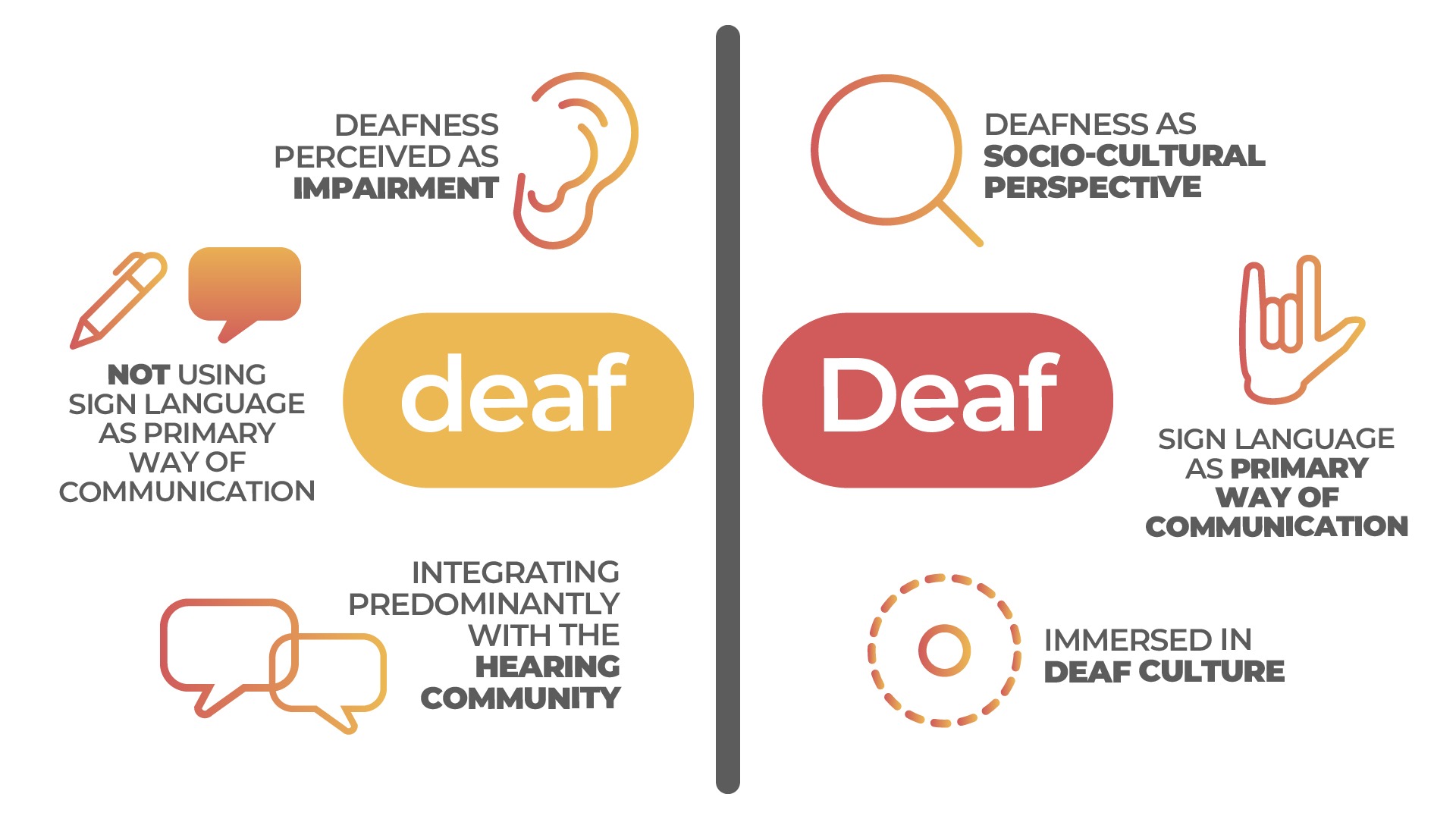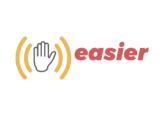What is the difference between ‘deaf’ and ‘Deaf’ terms and why do we need the distinction?
While the use of these terms is still evolving, lowercase ‘deaf’ is generally used to describe individuals with severe to profound hearing loss and with little or no residual hearing. Uppercase ‘Deaf’ is used by some deaf people to indicate that they embrace deafness as a cultural identity and communicate primarily through sign language(s). Here, deafness is not perceived from a medical point of view but rather from a socio-cultural perspective. While the medical model focuses on fixing the condition, the social model focuses on fixing the society that creates unnecessary barriers.
The distinction between the medical and social models is of great importance to the Deaf community, to which deafness is not a disability but a membership to a linguistic and cultural minority.
Which term should you use?
People who describe themselves using the uppercase identify themselves as culturally Deaf and part of the Deaf community. They tend to match the following:
- They have immersed themselves in the Deaf culture and community (may have attended Deaf school, take great pride in their Deaf identity, etc.).
- They know sign language and use it as their primary way of communication.
- They do not feel like they have ‘lost’ anything. They do not like to be labeled as ‘hearing impaired’ as they do not perceive their deafness as a medical condition/ Instead, they see deafness as part of their identity.
On the other hand, people who use the lowercase to describe themselves tend to match most of the following:
- They do not associate themselves as part of the Deaf community. They have little to no exposure to the Deaf community and integrate only (or predominately) with the hearing
- They do not use sign languages as their primary way of communication.
- They see deafness as a medical condition/disability.
Some d/Deaf people are more passionate about these terms than others, some are flexible, while others might have changed their viewpoints over the years*. Some people use the Deaf community as a gauge for their identity while others do not see deafness as a defining feature. When in doubt, it is best write ‘d/Deaf’, which is generally regarded as the most inclusive option. Or you can simply ask a d/Deaf person which term they prefer.
In any case, these terms should be treated solely as reference points and not as a means of inclusion/exclusion. What is important is that we recognize that there are some differences between deaf and Deaf and understand that the Deaf community has its own culture and identity embraced by millions of people around the world.
*e.g., the European Union of the Deaf has changed its policy and no longer makes the distinction. They have made a conscious switch to the lowercase version because, as they stress out, the identity is too complex to be reduced into a binary definition.

Share your thoughts!
We would like to hear from you. If you are d/Deaf, what other characteristics match your identity as a deaf or Deaf person? If you are a hearing person, how familiar were you with these terms before you read the article? Share your thoughts with us on our social media channels.
Follow our #DidYouKnowThat campaign to raise your Deaf awareness.
Previous article:
What is audism and how to avoid it?
Next article:
Deaf myths debunked: Part I

